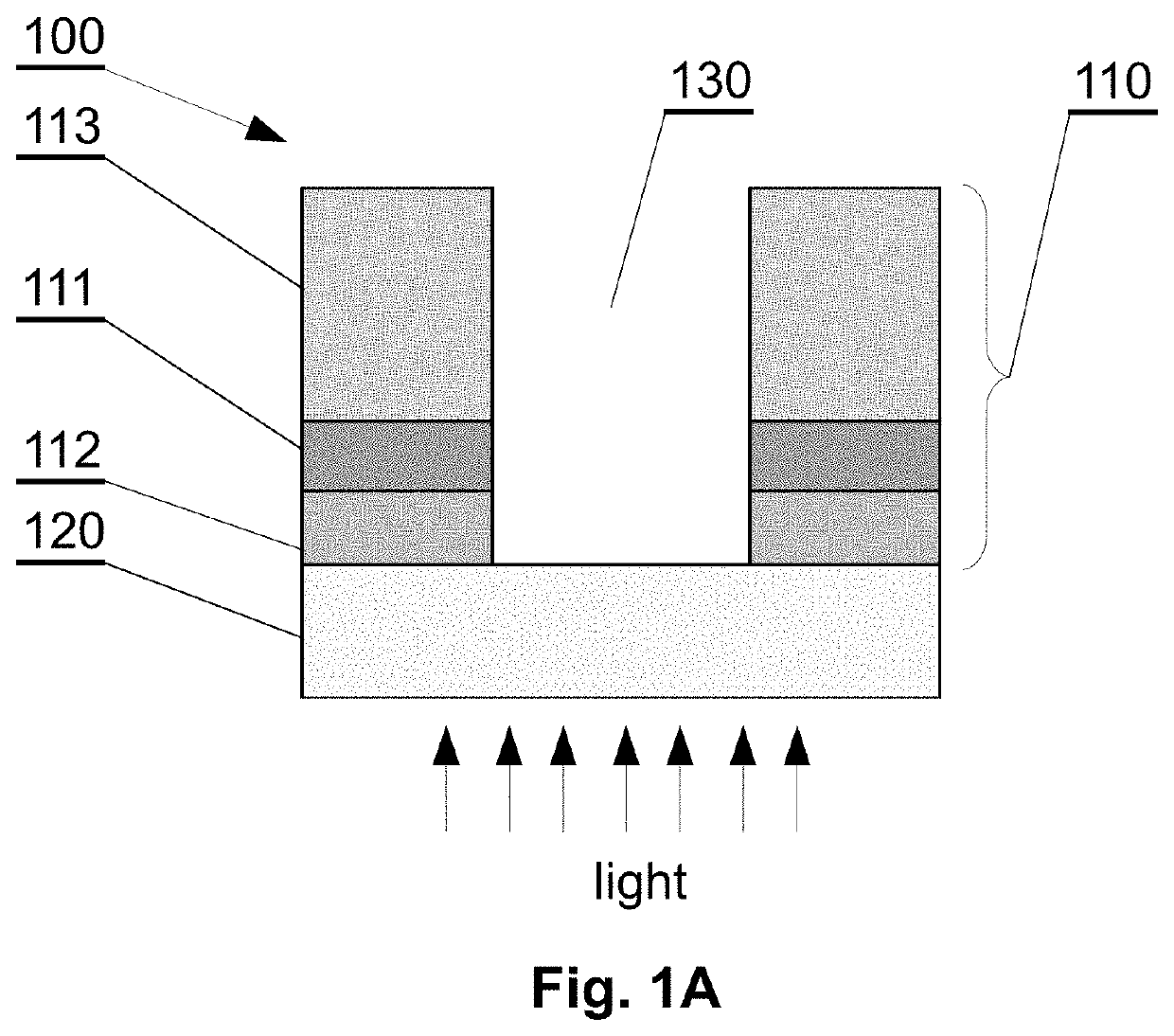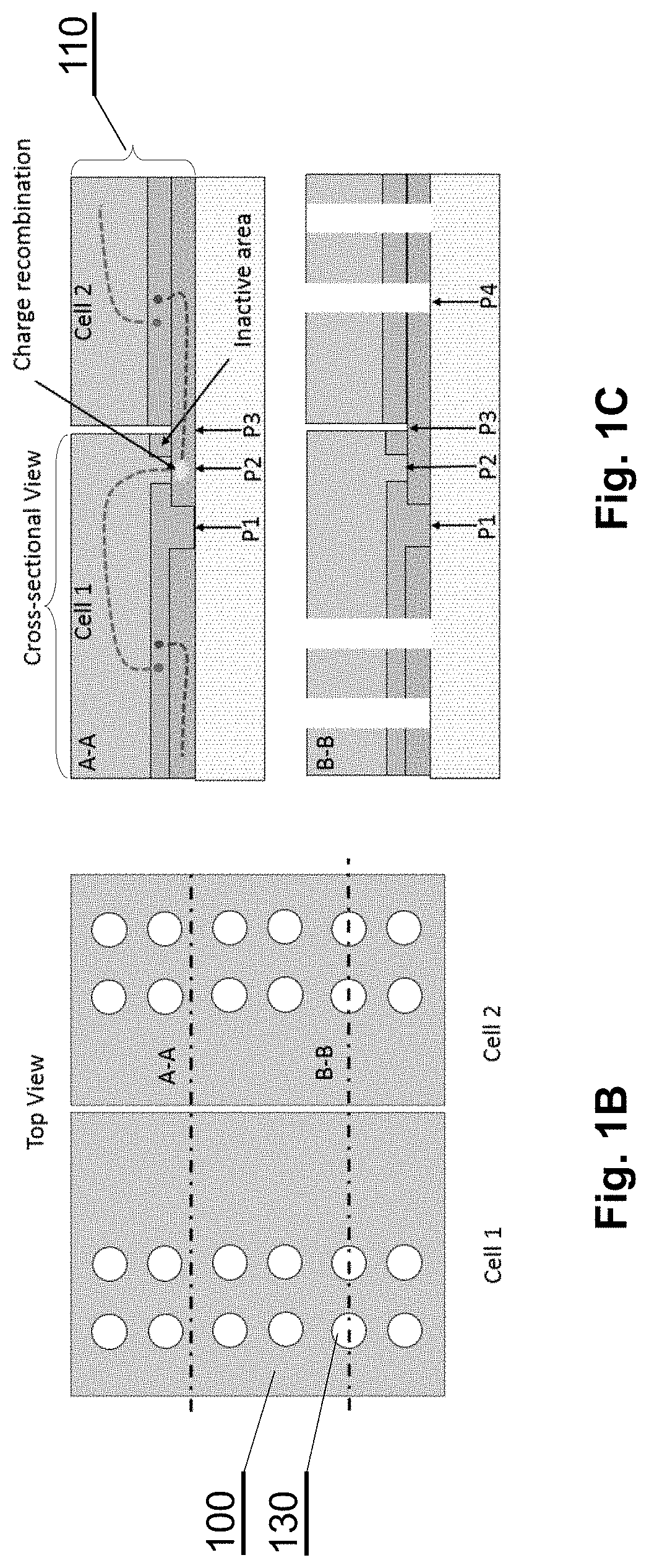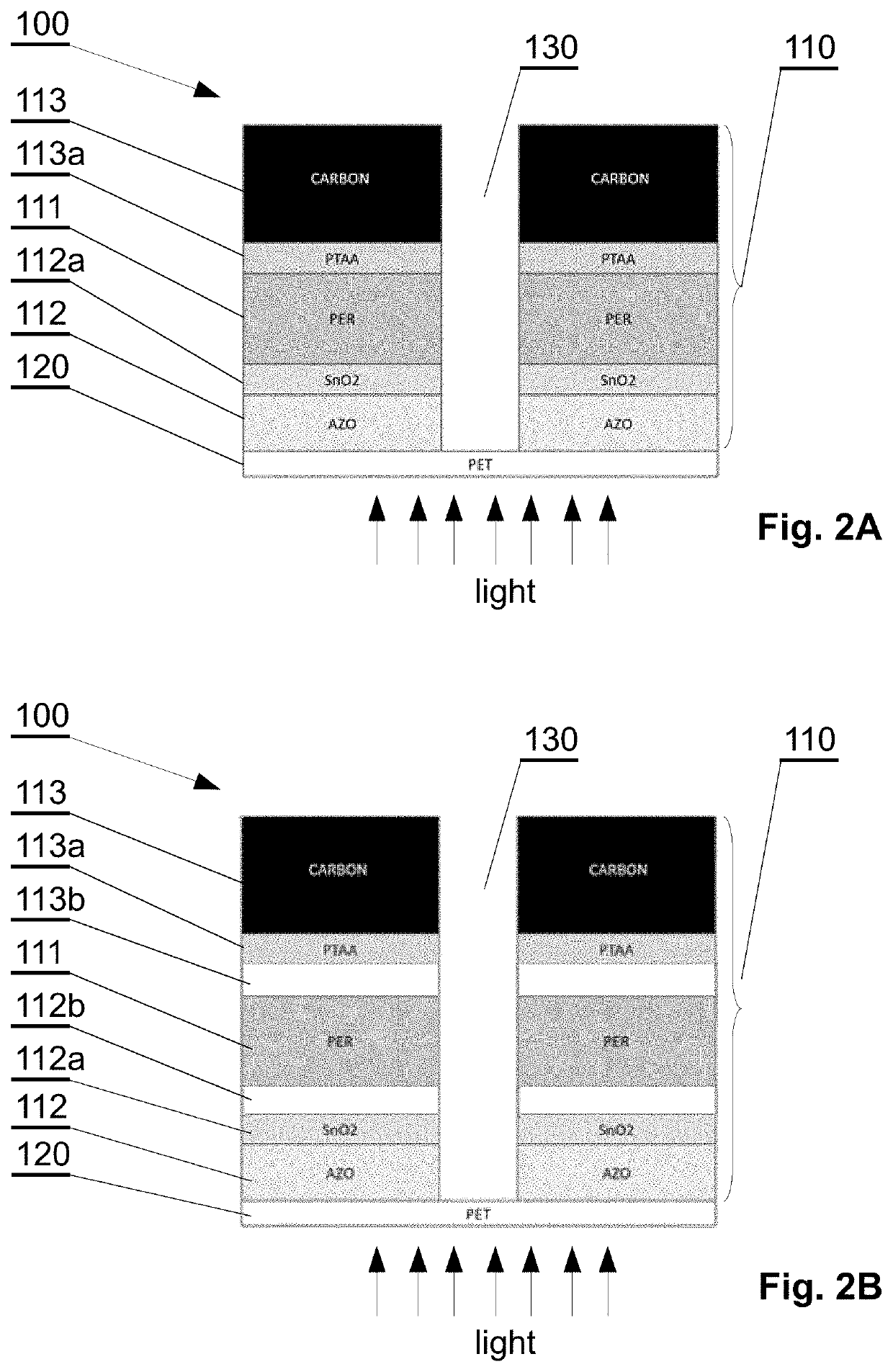A translucent photovoltaic device and a method for manufacturing thereof
a photovoltaic device and translucent technology, applied in the direction of photovoltaic energy generation, semiconductor devices, electrical equipment, etc., can solve the problems of reducing the efficiency of the whole pv device, and substantially high-efficiency pv devices
- Summary
- Abstract
- Description
- Claims
- Application Information
AI Technical Summary
Benefits of technology
Problems solved by technology
Method used
Image
Examples
Embodiment Construction
[0032]The developed method for manufacturing a translucent photovoltaic (PV) device allows one to obtain the PV devices comprising light-transmissive apertures of improved quality. Especially, the obtained apertures do not comprise metallic impurities and feature a regular shape, without significant delamination effect. Due to the above features, the short-circuits are not observed for the obtained PV devices. Moreover, the developed method is simplified and it may be accomplished with the use of less expensive nanosecond lasers for forming the light-transmissive apertures, instead of expensive picosecond or femtosecond lasers used for performing such the apertures according to the known solutions.
[0033]Although a nanosecond laser is characterized by a much larger heat affected zone than a picosecond laser, due to the structure of the PV device according to the present invention (having a carbon back electrode), the carbon electrode will combust and will not contact (bridge) with th...
PUM
| Property | Measurement | Unit |
|---|---|---|
| thickness | aaaaa | aaaaa |
| area | aaaaa | aaaaa |
| thickness | aaaaa | aaaaa |
Abstract
Description
Claims
Application Information
 Login to view more
Login to view more - R&D Engineer
- R&D Manager
- IP Professional
- Industry Leading Data Capabilities
- Powerful AI technology
- Patent DNA Extraction
Browse by: Latest US Patents, China's latest patents, Technical Efficacy Thesaurus, Application Domain, Technology Topic.
© 2024 PatSnap. All rights reserved.Legal|Privacy policy|Modern Slavery Act Transparency Statement|Sitemap



